Pure Land School of Buddhist Philosophy


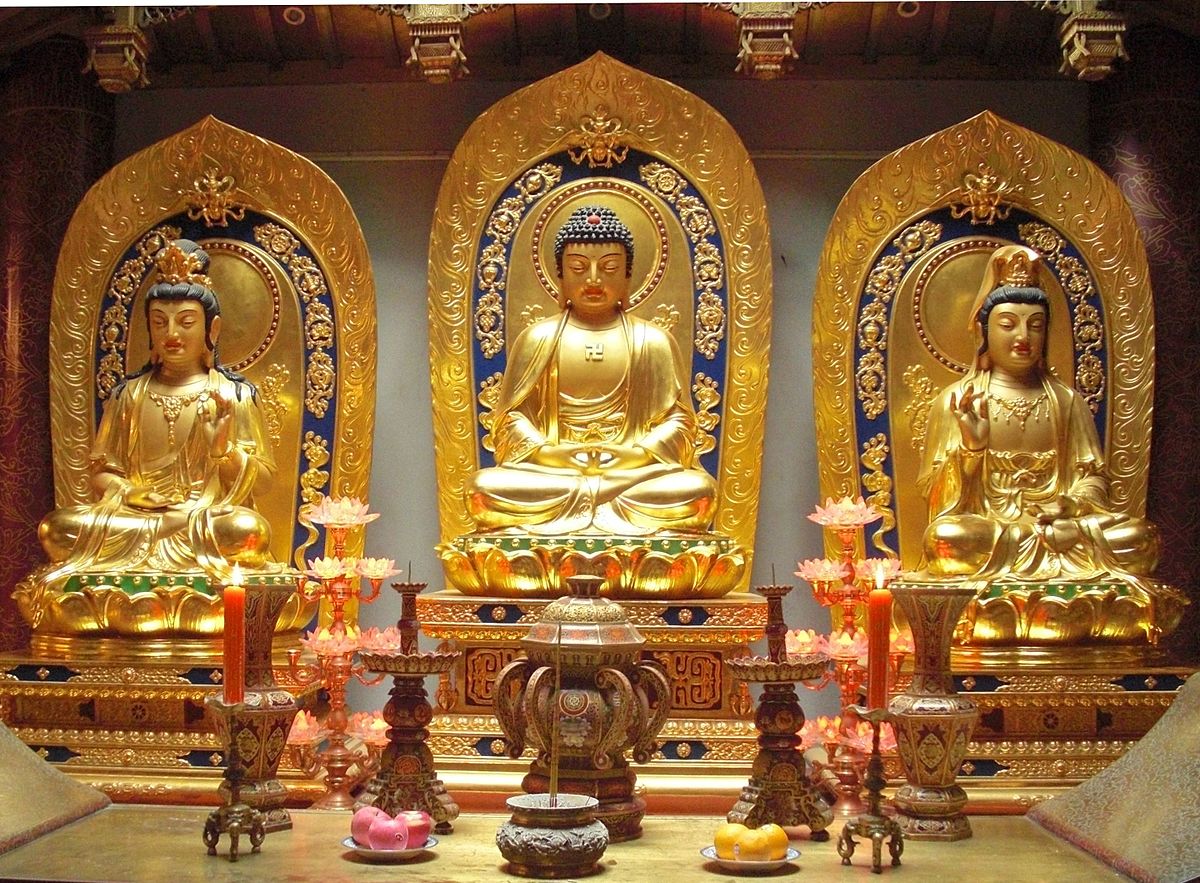


Key Terms
- Pure Land Buddhism
- Shin Buddhism
- Jōdo Shū Buddhism
- Jodo Shin Shu
- Amituofo
- Dharmakara
- Amida Buddha
- Shinran, the founder of Shin Buddhism
- Tendai Buddhism on Mount Hiei
- the esoteric Shingon school on Mount Koya and Nara
- Nara Buddhism
- Honen’s community in Yoshimizu in Kyoto
- Honen Shonin (1133-1212)
- Jōdo Shū: Pure Land Buddhism
- Shinran (1173-1263)
- Jodo Shinshu (“true pure land school”)
- Ippen
- Ji-shu, the “time school
- Ryōnin (1072–1132)
- Yūzūnenbutsu school of Japan
- Wonhyo (617-686) introduced Pure Land to Korea, where it is called Jeongto
- Shokobo Bencho (1162-1238), also called Shoko. Shoko also stressed many recitations of the Nembutsu but believed the Nembutsu did not have to be one’s only practice. Shokobo is considered to be the Second Patriarch of Jodo Shu.
- Nembutsu
Buddhism, Pure Land
Jìngtǔ 淨 土
Source: Buddhism, Pure Land / Jìngtǔ 淨 土
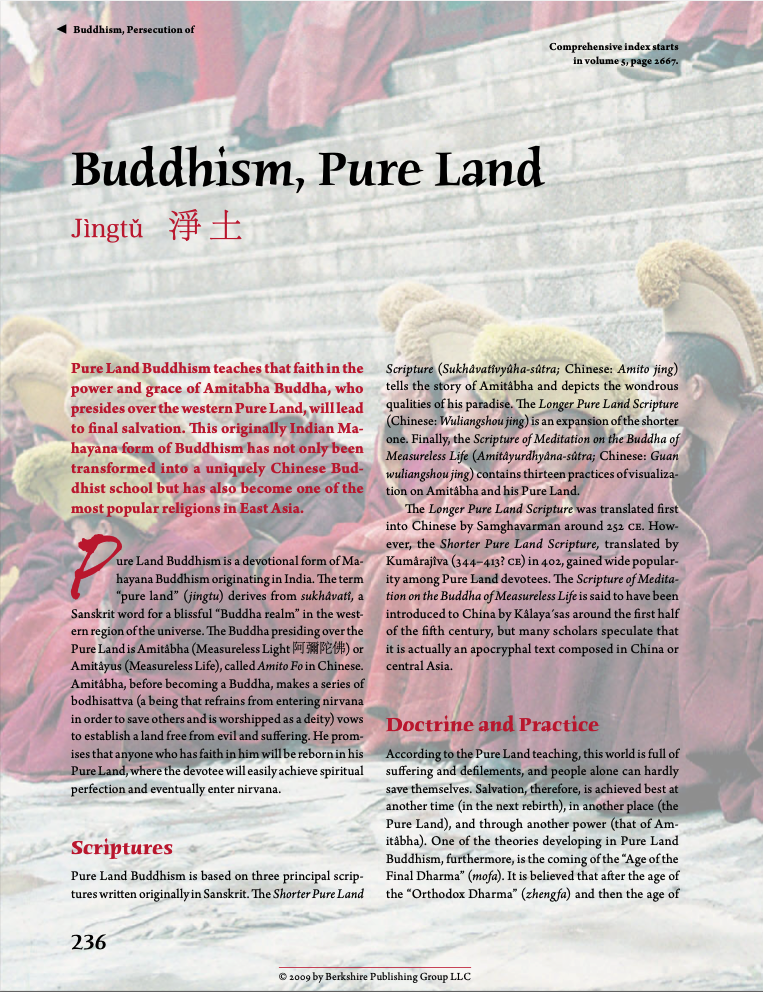
Source: Buddhism, Pure Land / Jìngtǔ 淨 土

Source: Buddhism, Pure Land / Jìngtǔ 淨 土
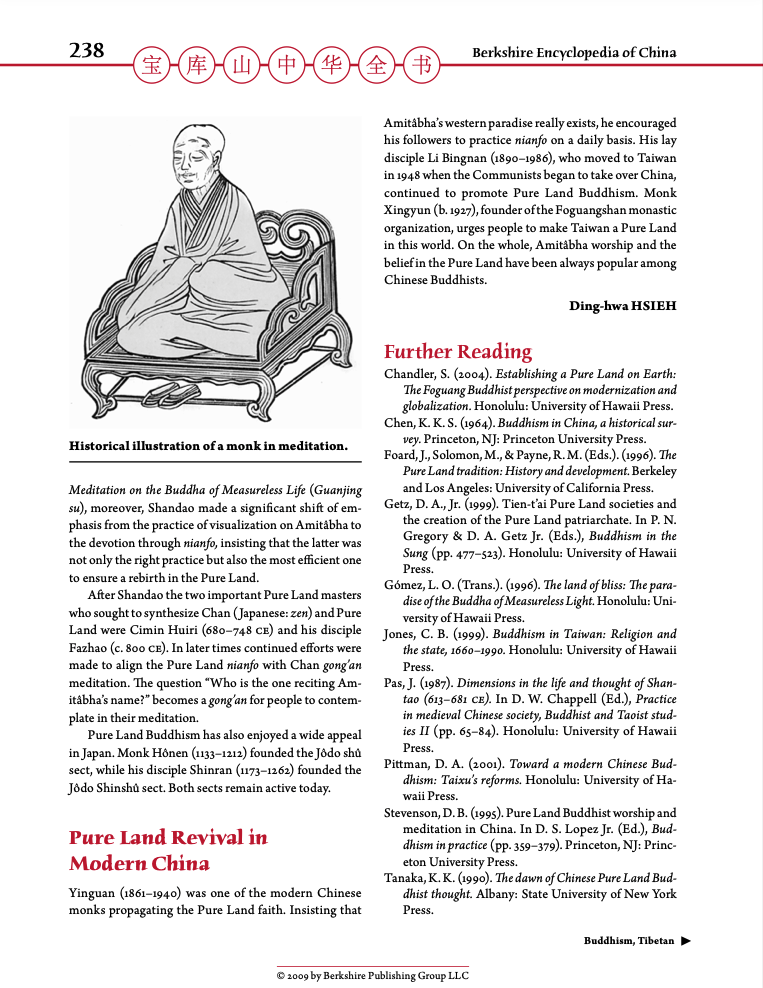
Introduction to Pure Land Tradition
Source: Introduction to Pure Land Tradition

Source: Introduction to Pure Land Tradition

Source: Introduction to Pure Land Tradition

My Related Posts
You can search for these posts using Search Posts feature in the right sidebar.
- Shingon (Esoteric) School of Buddhist Philosophy
- Three Treatise School (Sanlun) of Chinese Buddhist Philosophy
- Hua Yan Buddhism : Reflecting Mirrors of Reality
- What is Yogacara Buddhism (Consciousness Only School)?
- Dhyan, Chan, Son and Zen Buddhism: Journey from India to China, Korea and Japan
- Chinese Tiantai and Japanese Tendai Buddhism
- Intersubjectivity in Buddhism
- Schools of Buddhist Philosophy
- Meditations on Emptiness and Fullness
- Self and Other: Subjectivity and Intersubjectivity
- Law of Dependent Origination
- The Fifth Corner of Four: Catuskoti in Buddhist Logic
Key Sources of Research
The Art of Pure Land Buddhism
ESOTERIC PURE LAND BUDDHISM
Aaron P. Proffitt
Series: Pure Land Buddhist Studies
Paperback: $35.00
ISBN-13: 9780824893712
Published: January 2024
ADD TO CART
Hardback: $70.00
ISBN-13: 9780824893613
Chinese Pure Land Buddhism: Understanding a Tradition of Practice
Pure Land Buddhist Studies
Author Charles B. Jones
Contributor Richard K. Payne
Publisher University of Hawaii Press, 2019
ISBN 082488101X, 9780824881016
Length 222 pages
Published: April 2023
THE THREE PURE LAND SUTRAS
The Pristine Pure Land School
A Discourse by Dharma Master Huijing
Shenyang, China; August 8, 2009
Building a Pure Land on Earth
eLibrary
https://www.amitabha-gallery.org/elibrary
PURE-LAND ZEN ZEN PURE-LAND
Letters from Patriarch Yin Kuang
Pure Land Buddhism: An Easier Path to Nirvana?
Charles B. Jones, Ph.D.
https://smithsonianassociates.org/ticketing/attachments/252218/pdf/Pure-Land-Buddhism-Handout
Pure Land Sutras
Vincent Eltschinger
2015, Brill’s Encyclopedia of Buddhism (I: Literature and Languages)
https://www.academia.edu/37445218/Pure_Land_Sutras
In One Lifetime: Pure Land Buddhism
Going Home To the Pure Land
Amida Buddha, The Central Symbol of Pure Land Teaching
by Alfred Bloom, Emeritus Professor, University of Hawaii
Click to access Bloom-Amida.pdf
A Study of Vasubandhu’s Treatise on Pure Land : with special reference to his theory of salvation in the light of the development of the bodhisattva ideal
Hiroko Kimura
Pure Mind, Pure Land
A Brief Study of Modern Chinese Pure Land Thought and Movements
Wei, Tao
Master of Arts
Faculty of Religious Studies
McGill University
Montreal, Quebec, Canada
July 26, 2007
More Missing Pieces of Early Pure Land Buddhism: New Evidence for Akṣobhya and Abhirati in an Early Mahayana Sutra from Gandhāra
Ingo Strauch
PURE LAND BUDDHISM: HISTORY, PRESSUPOSITIONS, DOCTRINES AND IMPLICATIONS
Tsu-Kung Chuang
Two Pure Land Sutras
Click to access TwoPurelandSutras.pdf
“Chapter 3. The Development of the Concept of the Pure Land”.
Jones, Charles B..
Chinese Pure Land Buddhism: Understanding a Tradition of Practice, edited by Richard K. Payne, Honolulu: University of Hawaii Press, 2019, pp. 33-60. https://doi.org/10.1515/9780824881016-006
https://www.degruyter.com/document/doi/10.1515/9780824881016-006/pdf?licenseType=restricted
Chinese Pure Land Buddhism: Understanding a Tradition of Practice,
Jones, Charles B. and Payne, Richard K..
Honolulu: University of Hawaii Press, 2019. https://doi.org/10.1515/9780824881016
https://www.degruyter.com/document/doi/10.1515/9780824881016/html
Chinese Pure Land Buddhism: Understanding a Tradition of Practice is the first book in any western language to provide a comprehensive overview of Chinese Pure Land Buddhism. Even though Pure Land Buddhism was born in China and currently constitutes the dominant form of Buddhist practice there, it has previously received very little attention from western scholars. In this book, Charles B. Jones examines the reasons for the lack of scholarly attention and why the few past treatments of the topic missed many of its distinctive features. He argues that the Chinese Pure Land tradition, with its characteristic promise of rebirth in the Pure Land to even non-elite or undeserving practitioners, should not be viewed from the perspective of the Japanese Pure Land tradition, which differs greatly. More accurately contextualizing Chinese Pure Land Buddhism within the landscape of Chinese Buddhism and the broader global Buddhist tradition, this work celebrates Chinese Pure Land, not as a school or sect, but as a unique and inherently valuable “tradition of practice.”
This volume is organized thematically, clearly presenting topics such as the nature of the Pure Land, the relationship between “self-power” and “other-power,” the practice of nianfo (buddha-recollection), and the formation of the line of “patriarchs” that keep the tradition grounded. It guides us in understanding the vigorous debates that Chinese Pure Land Buddhism evoked and delves into the rich apologetic literature that it produced in its own defense. Drawing upon a wealth of previously unexamined primary source materials, as well as modern texts by contemporary Chinese Pure Land masters, the author provides lucid translations of resources previously unavailable in English. He also shares his lifetime of experience in this field, enlivening the narrative with personal anecdotes of his visits to sites of Pure Land practice in China and Taiwan.
The straightforward and nontechnical prose makes this book a standby resource for anyone interested in pursuing research in this lively, sophisticated, and still-evolving religious tradition. Scholars—including undergraduates—specializing in East Asian Buddhism, as well as those interested in Buddhism or Chinese religion and history in general, will find this book invaluable.
Author / Editor informationJones Charles B. :
Charles B. Jones is associate professor and director of the Religion and Culture graduate program in the School of Theology and Religious Studies at the Catholic University of America, Washington, D.C.Payne Richard K. :
Richard K. Payne is Yehan Numata Professor of Japanese Buddhist Studies at the Institute of Buddhist Studies, Berkeley.
The Indian Roots of Pure Land Buddhism: Insights from the Oldest Chinese Versions of the Larger Sukhåvativyuha
Jan Nattier Indiana University
Hōnen and Pure Land Buddhism
April 16 – June 9, 2024 | Heiseikan, Tokyo National Museum
Pure Land Buddhism in China: A Doctrinal History
by
Shinko Mochizuki Translated by Leo M Pruden
This e-book is based on the articles published on
Pacific World
Journal of the Institute of Buddhist Studies
http://www.shin-ibs.edu/academics/_pwj/
For the class on Pure Land
The International Buddhist College, Thailand, 2011 http://ibc.ac.th
The Compendium of Pure Land Buddhism
A collection of spiritual essays, poems and translations of rare Pure Land Buddhist works.
By Brian Bye Sheng Chung
Jōdo Shū: Pure Land Buddhism
Buddhism, Pure Land
Jìngtǔ 淨 土
Introduction to Pure Land Tradition
by Dr. Alfred Bloom, Professor Emeritus, University of Hawaii
Click to access Bloom-Tradition.pdf
Lotus and Pure Land
The Emergence of Pure Land Buddhism
Critical Readings on Pure Land Buddhism in Japan,
Amstutz, Galen, eds.
(Leiden, The Netherlands: Brill, 04 Jun. 2020) doi: https://doi.org/10.1163/9789004401501
https://brill.com/edcollbook/title/55098
Building a Pure Land Lineage:
A Study of Zhida’s Play Guiyuan jing and a Translation of
its Three Paratexts
Mengxiao Wang
Sheng Yen Postdoctoral Fellow in Chinese Buddhism, Institute of East Asian
Studies (Center for Buddhist Studies), University of California, Berkeley
Pure Land Buddhism
Wikipedia
https://en.wikipedia.org/wiki/Pure_Land_Buddhism
Chinese Pure Land Buddhism: Understanding a Tradition of Practice by Charles B. Jones (review)
Kendall Marchman
Journal of Chinese Religions
Johns Hopkins University Press
Volume 48, Number 2, November 2020
pp. 297-299
10.1353/jcr.2020.0018
Monotheistic elements in early Pure Land Buddhism
Roger J Corless
Available online 26 August 2004.
Religion
Volume 6, Issue 2, Autumn 1976, Pages 176-189
https://www.sciencedirect.com/science/article/abs/pii/0048721X76900257
The Zen Critique of Pure Land Buddhism,
PAUL O. INGRAM,
Journal of the American Academy of Religion, Volume XLI, Issue 2, June 1973, Pages 184–200, https://doi.org/10.1093/jaarel/XLI.2.184
ESOTERIC PURE LAND BUDDHISM
Aaron P. Proffitt
Series: Pure Land Buddhist Studies
ISBN-13: 9780824893712
Published: January 2024
ISBN-13: 9780824893613
Published: April 2023
Ching Tu Tsung Amitabha School of Pure Land Buddhism
http://chingtutsung.yolasite.com
Japanese Pure Land Philosophy
SEP
https://plato.stanford.edu/entries/japanese-pure-land/
The Three Pure Land Sutras
Nenhutsu Leads to the Avid Hell: Nichiren’s Critique of the Pure Land Teachings
Jacqueline STONE
Honen and Pure Land Buddhism
http://www.eikando.or.jp/mobile_en/mb_honen_en.html
Interpreting Amida: History and Orientalism in the Study of Pure Land Buddhism
Interpreting Amida: History and Orientalism in the Study of Pure Land Buddhism. By Galen Amstutz. Albany : State Univeristy of New York Press , 1997
James C. Dobbins
Journal of Asian Studies (1998) 57 (4): 1154–1156.
https://doi.org/10.2307/2659339
MYSTERIES OF SPEECH AND BREATH:
DŌHAN’S 道範 (1179-1252) HIMITSU NENBUTSU SHŌ 祕密念佛抄 AND ESOTERIC PURE LAND BUDDHISM
by
Aaron P. Proffitt
A dissertation submitted in partial fulfillment of the requirements for the degree of Doctor of Philosophy
(Asian Languages and Cultures)
in the University of Michigan
2015
https://deepblue.lib.umich.edu/handle/2027.42/111511
Shin Buddhism (Jōdo Shinshū) in Europe
Organizational Issues
Louella Matsunaga
Pure Land Buddhism in Modern Japanese Culture
Volume 121 of Numen Book Series
Author Elisabetta Porcu
Publisher BRILL, 2008
ISBN 9047443055, 9789047443056
Length 276 pages
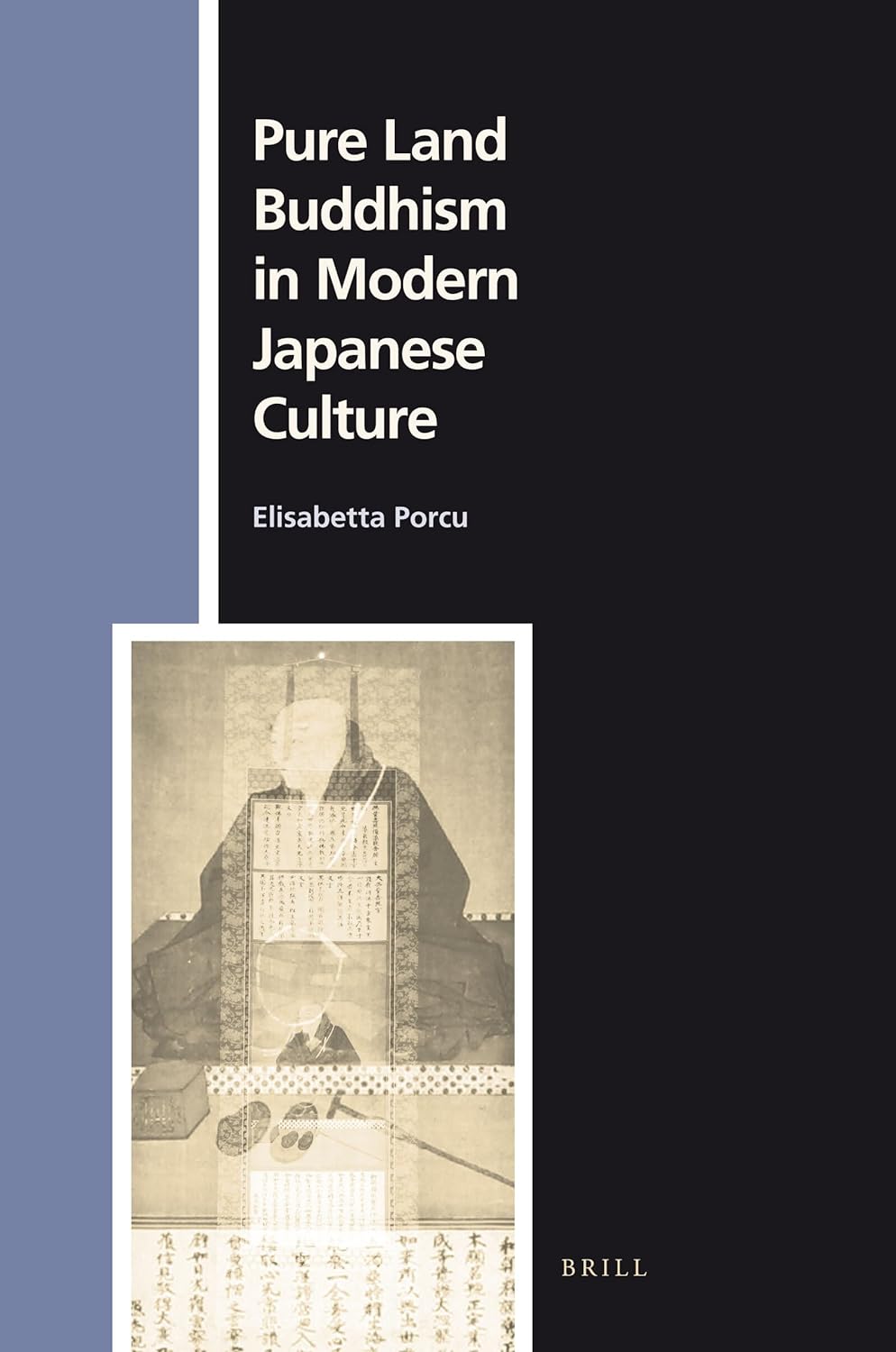
A Brief History of Pure Land Buddhism
Pure Land is both a distinct school of Buddhism that developed in Japan and, says Aaron Proffitt, a cornerstone of the whole Mahayana tradition.
5 MAY 2022
https://www.lionsroar.com/pure-land-buddhism-history/
A Brief History of Pure Land Buddhism
Pure Land is both a distinct school of Buddhism that developed in Japan and, says Aaron Proffitt, a cornerstone of the whole Mahayana tradition.
Early Orientalist scholars of Buddhism working under colonialism had little interest in the diversity and vitality of living Buddhist cultures. Instead, they cherry-picked the Buddhist teachings to fit their own modernist, Protestant worldview.
This ahistorical perspective on Buddhism—a “Buddhism” created by and for European intellectuals—was then used to criticize living Buddhist cultures. These scholars believed that Mahayana Buddhism in general, but especially the Pure Land teachings, were a perverse distortion of the buddhadharma (as they defined it).
Sadly, this attitude is still widely seen. Pure Land Buddhism is arguably the most commonly practiced form of Buddhism in the world. Yet in English-language academic and popular writing it is largely ignored, or wholly misunderstood.
The Pure Land teachings are fundamental to Mahayana philosophy, ritual, meditation, art, and scripture. Generally, we could think of Mahayana Buddhism itself as a “Buddhism of the Pure Lands.” More specifically, the term “Pure Land Buddhism” also refers to a distinct form or school of Buddhism that developed in Japan. While drawing on the general Pure Land teachings in Mahayana Buddhism, this school focuses particularly on contemplation of the Pure Land named Sukhavati (Land of Bliss) and the Buddha of that land, Amitabha.
While some Mahayana Buddhists may aspire to be reborn in the Pure Land in the next life, others conceive of the Pure Land as a symbol for nirvana that is in some sense present within this world. Others may hold both positions at the same time. As the Contemplation Sutra says, “the mind that creates the Buddha is the Buddha.”
Pure Land Teachings in India
Today we divide the Buddhist world into Theravada and Mahayana, yet this division wasn’t always so clear-cut. Many elements we now identify as Mahayanaor Theravada or tantra developed gradually within diverse early Indian cultural contexts in the period 500 BCE–100 CE, before the sutras we now have access to were written down.
For the most part, the texts written in the literary language known as Pali, which today we associate with Theravada Buddhism, preserve a worldview that suggests only one buddha may exist at a time. But the body of sutras we now label as Mahayana offer diverse perspectives on the nature of buddhahood and the path to awakening.
Buddhists of all schools agree that Shakyamuni Buddha taught about buddhas of the past and future, but within Mahayana sutras and tantras, it’s believed the Buddha also taught about other buddhas of this age, such as Akshobhya, Vairocana, and Amitabha.
Sukhavati and Amitabha appear to have been very popular when Mahayana texts were written down, as they’re mentioned in literally hundreds of Mahayana sutras and tantras. Later treatises dealing with the Pure Land teachings are attributed to great Indian masters such as Nagarjuna (circa 150–250 CE) and Vasubandhu (fourth–fifth century CE).
Pure Land Buddhism in China
Buddhism was transmitted along trade routes throughout South and Central Asia, and by the first century of the Common Era it began taking root in China. Mahayana Buddhism was particularly embraced, and as the Pure Land teachings are a fundamental aspect of Mahayana philosophy and practice, diverse perspectives on the pure lands flourished in China early on.
Born in Gandhara in 147 CE, the monk Lokaksema translated Sanskrit Mahayana texts into Chinese, including the Pratyutpanna Samadhi Sutra (the Sutra on the Samadhi for Encountering Face-Face the Buddhas of the Present). The Pratyutpanna Samadhi Sutra was particularly influential upon the monk Huiyuan (334–416), whom later generations recognized as the first Pure Land patriarch.
Huiyuan organized Pure Land practice societies, referred to as White Lotus Societies, whose practitioners contemplated Amitabha Buddha in order to receive mystical visions of him. This inspired later forms of communal Pure Land practice. Like most other Chinese Buddhist masters, Huiyuan was also conversant in Daoist and Confucian thought. He’s famous for rebuking a local warlord by declaring “monks do not revere kings.”
Zhiyi (538–597) of Mount Tiantai in Zhejiang, China, is regarded as the founder of the Tiantai tradition, which offered an indigenous Chinese approach to Indian Buddhism. Zhiyi revered Nagarjuna’s teachings on emptiness, and offered a comprehensive understanding of Buddhist doctrine and meditation that ended up influencing the whole of East Asian Buddhism.
Zhiyi’s perspective on Pure Land practice also drew upon the Pratyutpanna Samadhi Sutra, recommending recitation of the name of Amitabha as a way of staying focused during meditation. Some of the most influential Pure Land teachers in East Asian history were associated with the Tiantai lineage, known as Cheontae in Korea and Tendai in Japan.
The works of Shandao (613–681) represent another important strand of East Asian Pure Land Buddhist thought. Shandao was revered for his visionary experiences and meditative prowess. What distinguishes Shandao was his revolutionary teaching that Pure Land practices can help even ordinary beings attain rebirth in the Pure Land, and thus awakening. This was in contrast to the elite view that Pure Land rebirth was only possible for highly accomplished bodhisattvas.
Throughout Chinese history, Chan (Zen) masters, as well as systematizers of East Asian Esoteric (tantric) Buddhism, have promoted Pure Land practices. The Chan scholar–monk Yongming Yanshou (904–975) drew on the long history of Chan–Pure Land practice and argued that when Pure Land practices are integrated with Chan meditation, it’s more effective than when Chan meditation is practiced alone. To this day, Chan meditation, esoteric practices, and Pure Land practices function together within Chinese, Korean, Vietnamese, Taiwanese, and Japanese Buddhism.
Pure Land Buddhism in Tibet
Tibetan Buddhism developed later than East Asian Buddhism, so it was able to draw upon the full range of Indian Buddhist texts. Eventually the tantras were emphasized. While we may often associate the tantras with the rapid attainment of buddhahood in this body and world, many tantras are said to lead to rebirth in the pure lands, especially Sukhavati.
The Pure Land tradition has manifested in myriad ways in Tibetan Buddhism. Padmasambhava (circa eighth–ninth century) was a great tantric teacher in Tibet who came to be recognized as an incarnation of Amitabha Buddha; the Tibetan lineage of reincarnated tulkus known as the Panchen Lamas are said to be emanations of Amitabha. A Tibetan ritual known as phowa involves practitioners ejecting their consciousness out the top of their heads and into Sukhavati. One of the most important mantras in Tibetan Buddhism is that of Avalokiteshvara, “Om Mani Padme Hum,” which is said to lead to rebirth in Sukhavati.
In Tibet, as in India and most of Asia, Pure Land Buddhism has not functioned as a distinct sect or school. Instead, Pure Land philosophy and practices have been integral to diverse Mahayana traditions. In Japan, Pure Land Buddhism emerged as a distinct approach to Buddhism.
Japanese Pure Land Buddhism
The Japanese monk Eon was a scholar of Nagarjuna’s Madhyamaka (Middle Way) philosophy who traveled to China in 608 CE. Upon his return to Japan over thirty years later, he chose the Pure Land teachings as the subject of his first lecture.
Devotion to Amitabha became a major feature of Japanese Buddhism. Initially, Japanese Buddhists practiced the dedication of merit to help their ancestors attain rebirth in the Pure Land, but over time, aspiring to one’s own rebirth in the Pure Land became popular.
Japanese monks associated with the Mount Hiei Tendai tradition, such as Ennin (794–864) and Genshin (942–1017), promoted Tendai philosophy, esoteric ritual, and the practice of nembutsu (Pure Land contemplation and the recitation of Amitabha Buddha’s name). Wandering ascetics such as Kuya (903–972) traveled between mountain monastic centers and the marketplace to share Pure Land teachings with the common people.
Kakuban (1095–1143), and later Dohan (1179–1252), drew upon the esoteric understanding of mantra and promoted the idea that Amitabha Buddha is best understood as the breath of life of all beings and that Pure Land “rebirth” is the same as attaining buddhahood in this very body.
In the twelfth and thirteenth centuries, the rising power of the samurai class sent Japan into chaos. In response to this social upheaval, an egalitarian approach to Buddhism emerged that emphasized the Pure Land path as open to ordinary people, not just those engaged in elite monastic practice. The medieval Japanese Pure Land schools tended to emphasize the Pure Land path almost to the exclusion of practices such as scholasticism, Zen meditation, and esoteric ritual, while at the same time drawing upon the philosophical insights that arose from those traditions.
Honen (1133–1212) is the great revolutionary of Japanese Pure Land history. Drawing on his broad erudition in Mahayana philosophy and practice, and the works of Shandao in particular, Honen sought the teaching that would be most effective for people living in this age of chaos and anxiety. Eventually, Honen came to see the recitation of the name of Amitabha, “Namu Amida Butsu,” as the essential practice.
Because this simple practice is possible for all people, regardless of gender or social station, it exemplifies the universal compassion and wisdom of Amitabha Buddha. Honen inspired a movement that, though persecuted by the powers that be, ended up transforming Japanese Buddhism by creating a “Buddhism of the Pure Land.”
Honen’s disciple Shinran (1173–1263) referred to himself as a “stubble headed dummy,” and claimed to not even have one student. Yet the Jodo Shinshu lineage that looks to him as its founder is the largest school of Buddhism in Japan and one of the oldest and largest in the Americas as well, making him one of the most influential Buddhist thinkers in world history.Shinran argued that progress along the path, Pure Land rebirth, and the attainment of awakening occur not through one’s own efforts alone. Rather, Amitabha Buddha is the dynamic force to which beings spontaneously awaken through a radical letting go—an experience known as shinjin, “the mind of confidence” or “awakening.”
Women have played an important role in Pure Land Buddhism, and Shinran owed his success in many ways to the women in his life. Without his wife, Eshinni, who supported his ministry, and his daughter Kakushinni, who built a mausoleum dedicated to him, Shinran likely would have been little more than an historical footnote.
Although Pure Land Buddhism remains understudied and poorly understood in the English-speaking world, scholars and practitioners today are building new bridges with other Buddhist schools and helping people understand what Pure Land Buddhism really is. In time, the profundity and diversity of the Pure Land tradition will become apparent.
Aaron Proffitt is an Associate Professor of Japanese Studies at The University at Albany-SUNY. He earned his PhD in Buddhist Studies at the University of Michigan in 2015, and his first book, Esoteric Pure Land Buddhism (University of Hawaii Press, 2023), explores the ways that Buddhists in East Asia employed tantric thought and practice to attain rebirth in the Pure Land, and contains the first translation of Dōhan’s (1179–1252) Himitsu nenbutsu shō into a modern language. His research and publications have explored Esoteric Buddhism, Pure Land Buddhism, and the Lotus Sutra, and his current research explores the way that emptiness has been understood and employed within the Pure Land tradition.His book Esoteric Pure Land Buddhism will be published in September by University of Hawaii Press.
In One Lifetime: Pure Land Buddhism Paperback – January 1, 2007
by Shi Wuling (Author)

Pure Land: History, Tradition, and Practice
(Buddhist Foundations) Paperback – May 18, 2021
by Charles B. Jones (Author)

The Three Pure Land Sutras: The Principle of Pure Land Buddhism
Paperback – March 31, 2014
by Jodo Shu Research Institute (Author, Editor), Karen J. Mack (Author), Translator (Author)
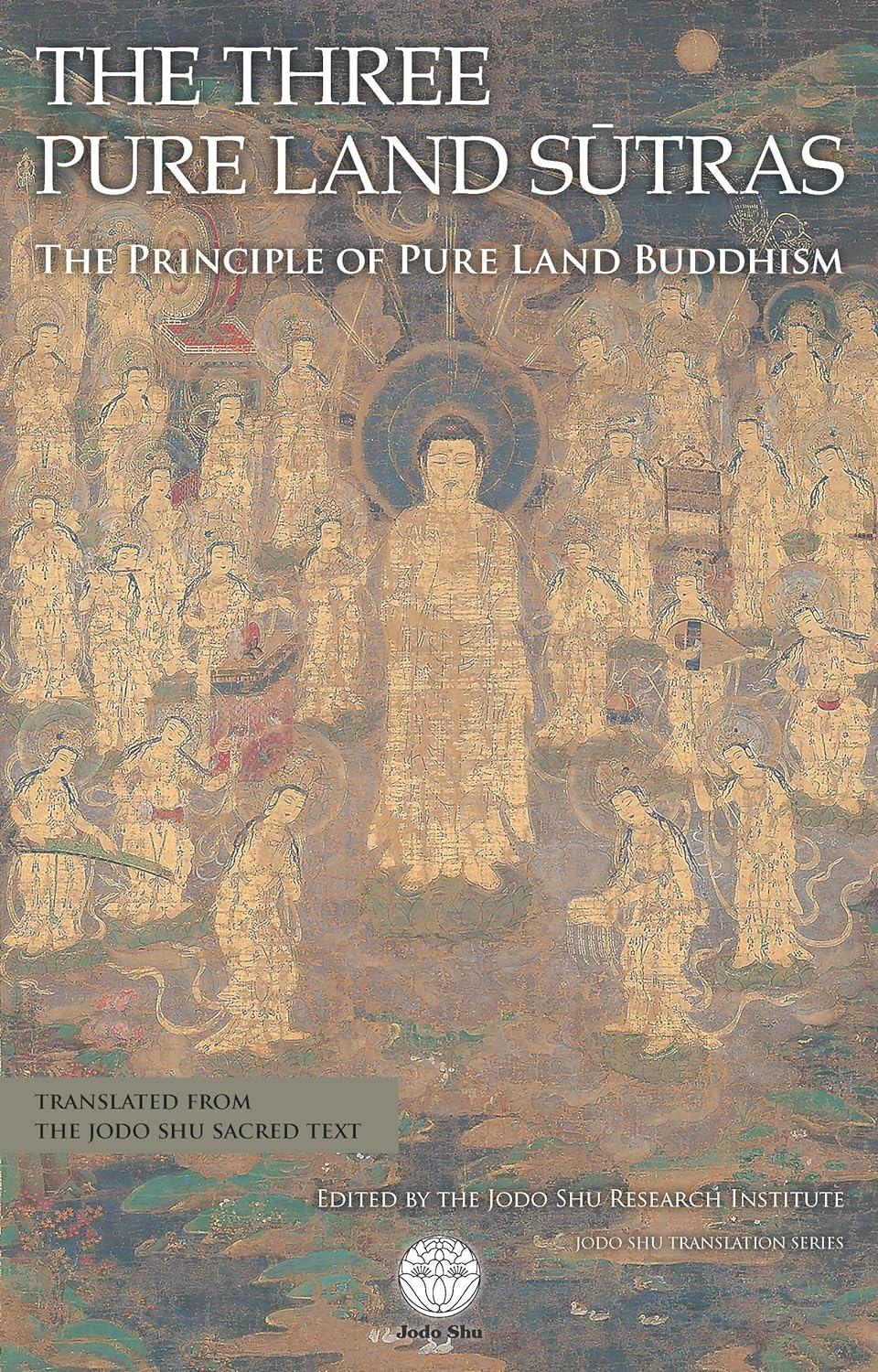
Call of the Infinite: The Way of Shin Buddhism Paperback – December 7, 2016
by John Paraskevopoulos (Author)

Shin Buddhism: Bits of Rubble Turn into Gold Paperback – September 17, 2002
by Taitetsu Unno (Author)
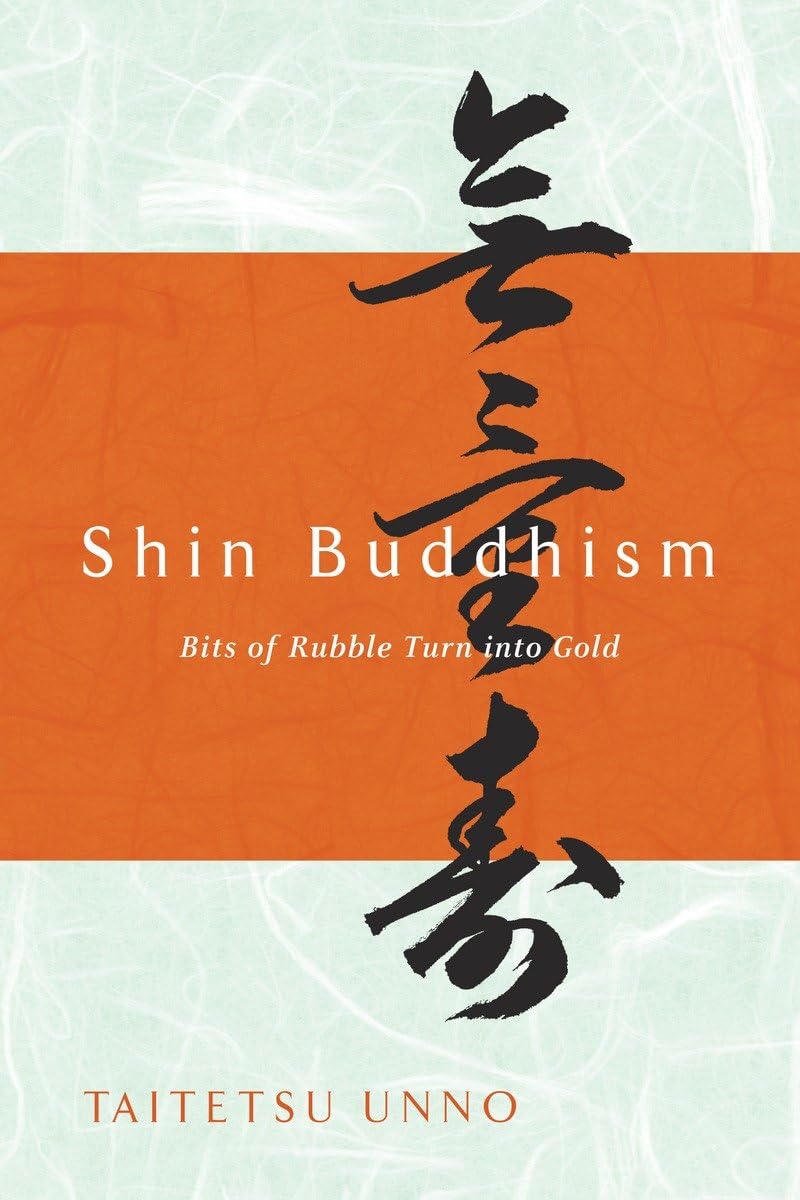
River of Fire, River of Water: An Introduction to the Pure Land Tradition of Shin Buddhism Paperback – April 13, 1998
by Taitetsu Unno (Author)

Buddha of Infinite Light
Paperback – February 12, 2002
by D. Rose Suzuki (Author)
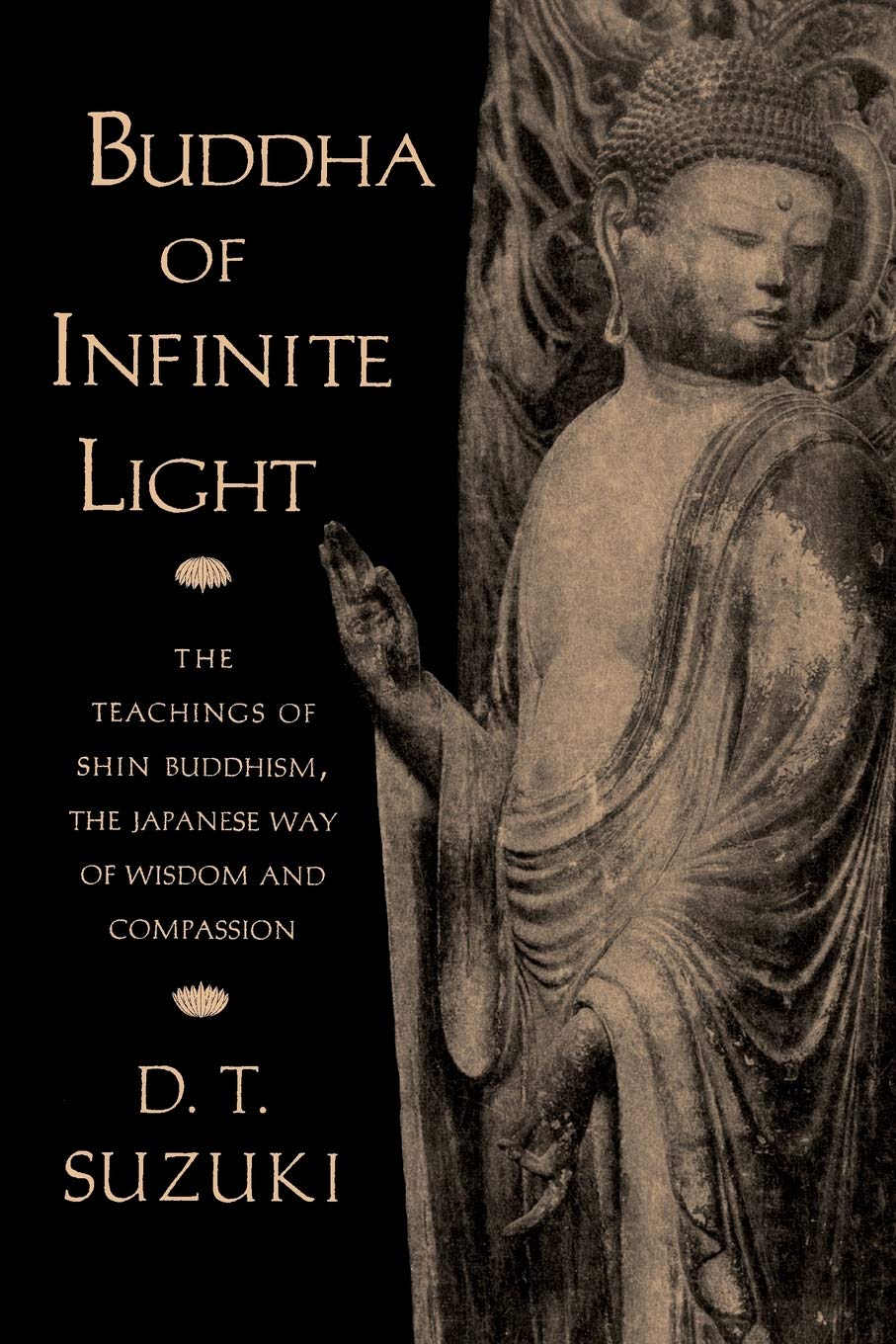
The Essential Shinran: A Buddhist Path of True Entrusting
Paperback – December 21, 2006
by Alfred Bloom (Editor), Ruben Havito (Foreword)

Heart of the Shin Buddhist Path: A Life of Awakening
Paperback – March 26, 2013
by Takamaro Shigaraki (Author), David Matsumoto (Translator)

Immeasurable Life: The Essence of Shin Buddhism
Paperback – May 29, 2020
by John Paraskevopoulos (Author)
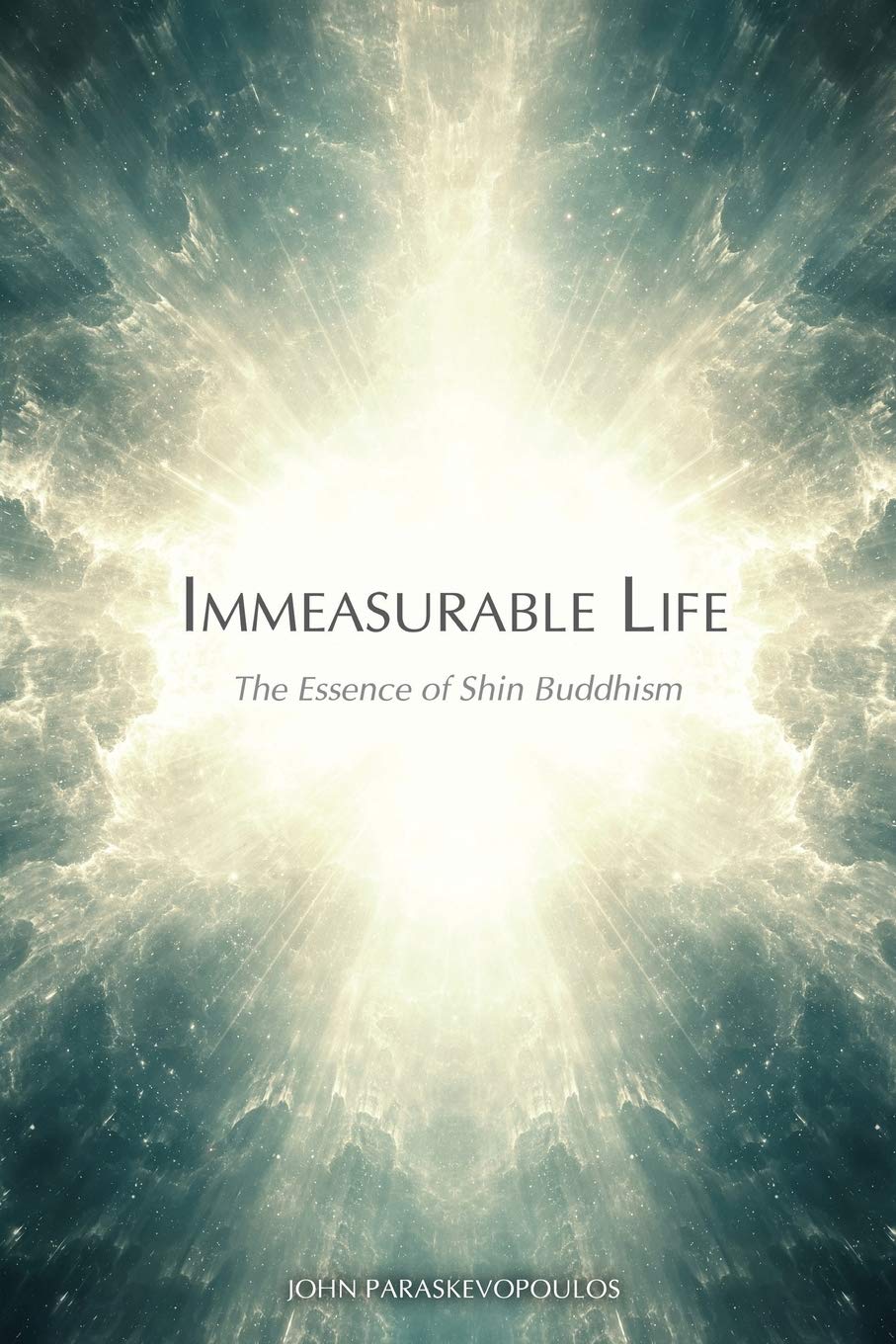
Thus Taught Master Shichiri: One Hundred Gems of Shin Buddhist Wisdom
Paperback – January 18, 2023
by Rev. Gōjun Shichiri (Author), Hisao Inagaki (Translator)
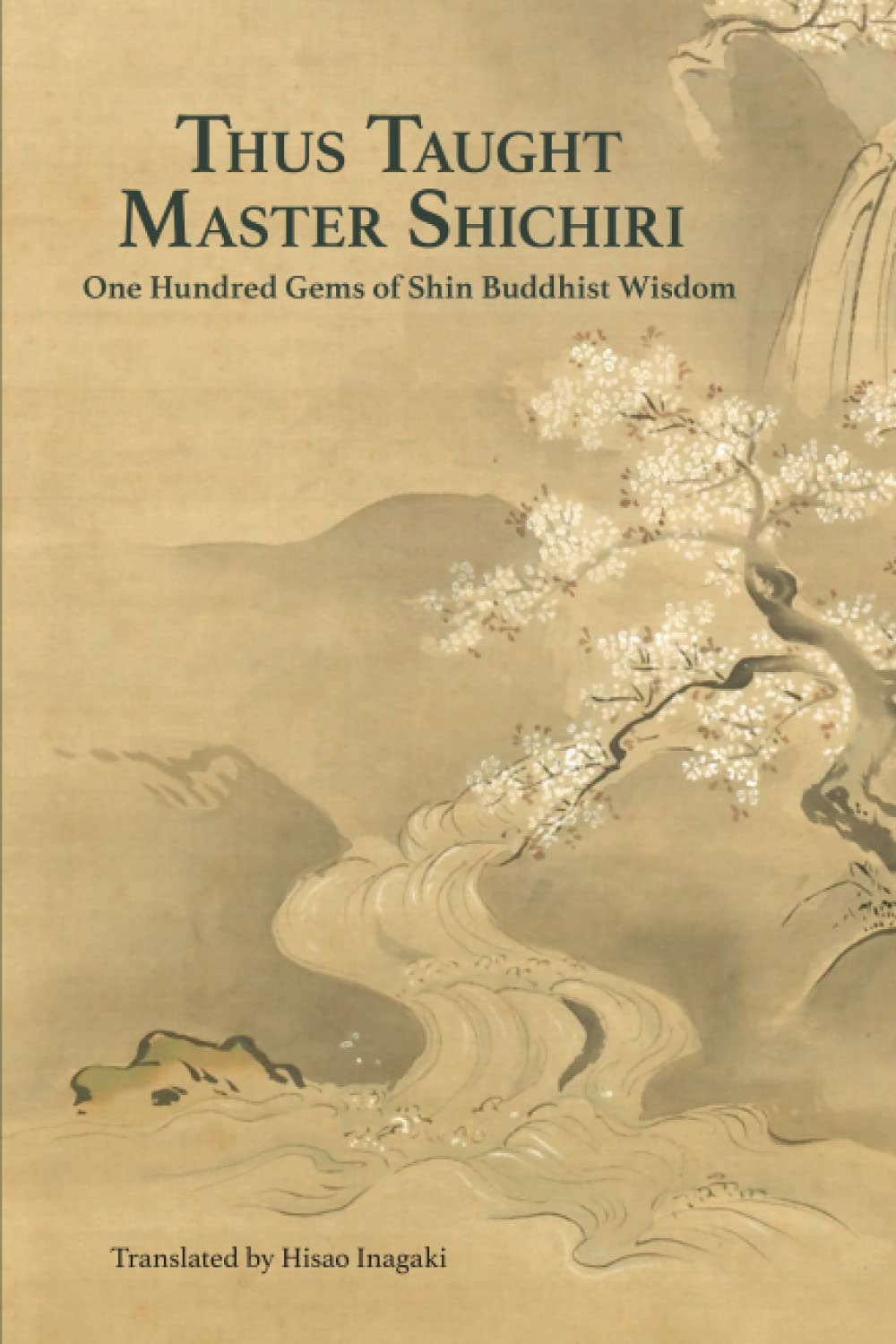
Living Nembutsu: Applying Shinran’s Radically Engaged Buddhism in Life and Society
Paperback – March 1, 2023
by Jeff Wilson (Author)
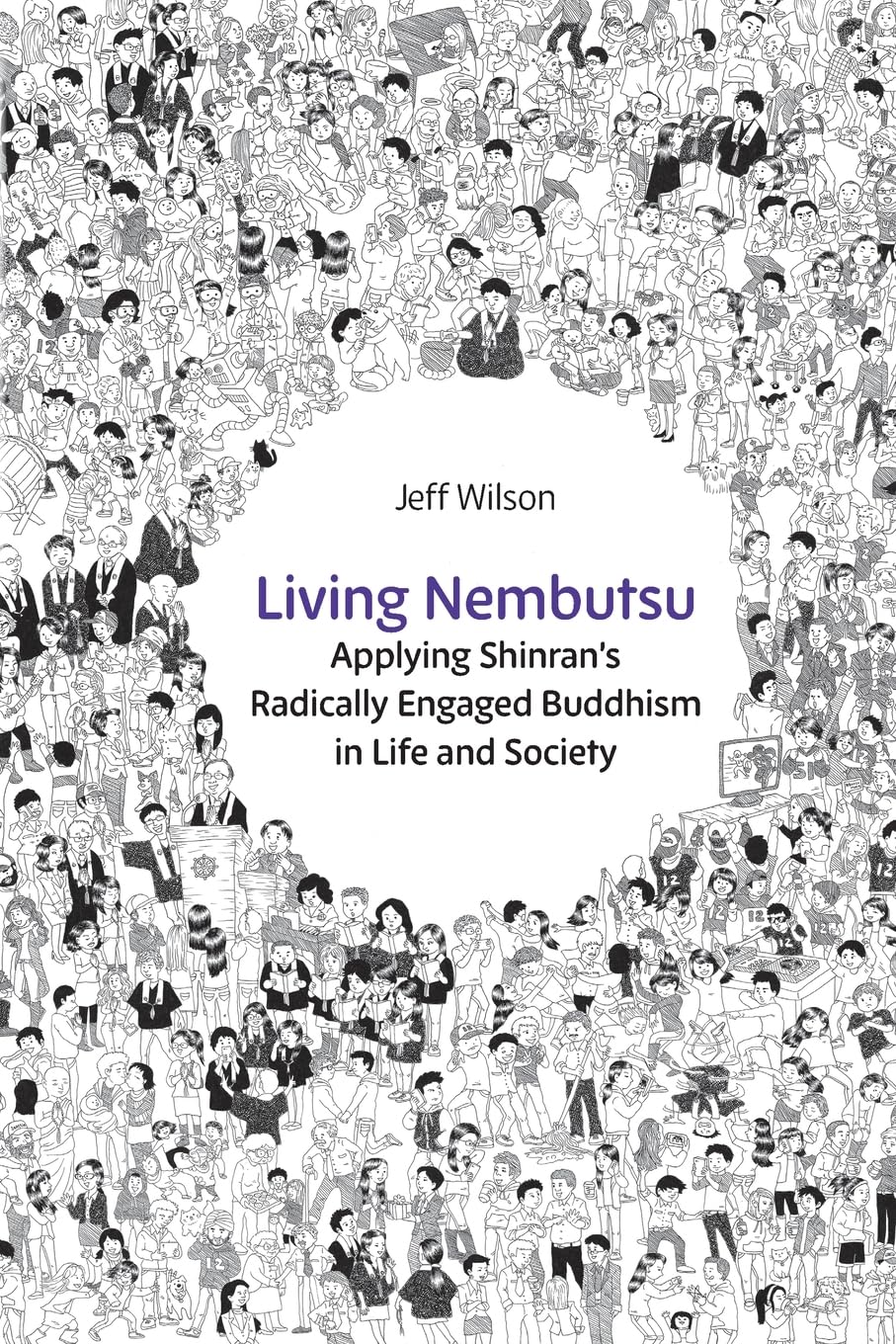
Let This Be Known: Finding the Shin Buddhist Path
Paperback – October 23, 2021
by James Pollard (Author)
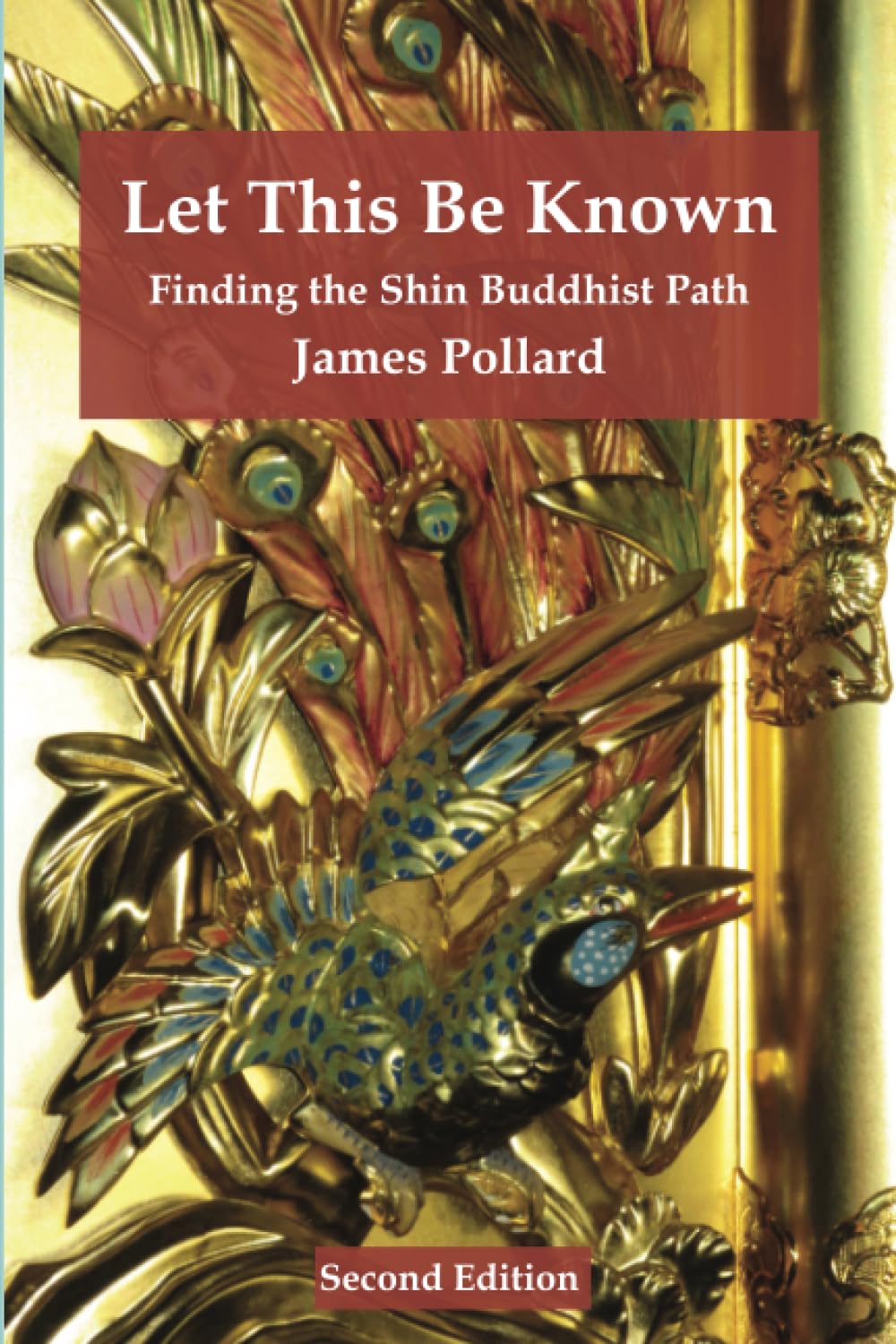
The Promise of Amida Buddha: Honen’s Path to Bliss
Hardcover – May 10, 2011
by Joji Atone (Translator), Yoko Hayashi (Translator)
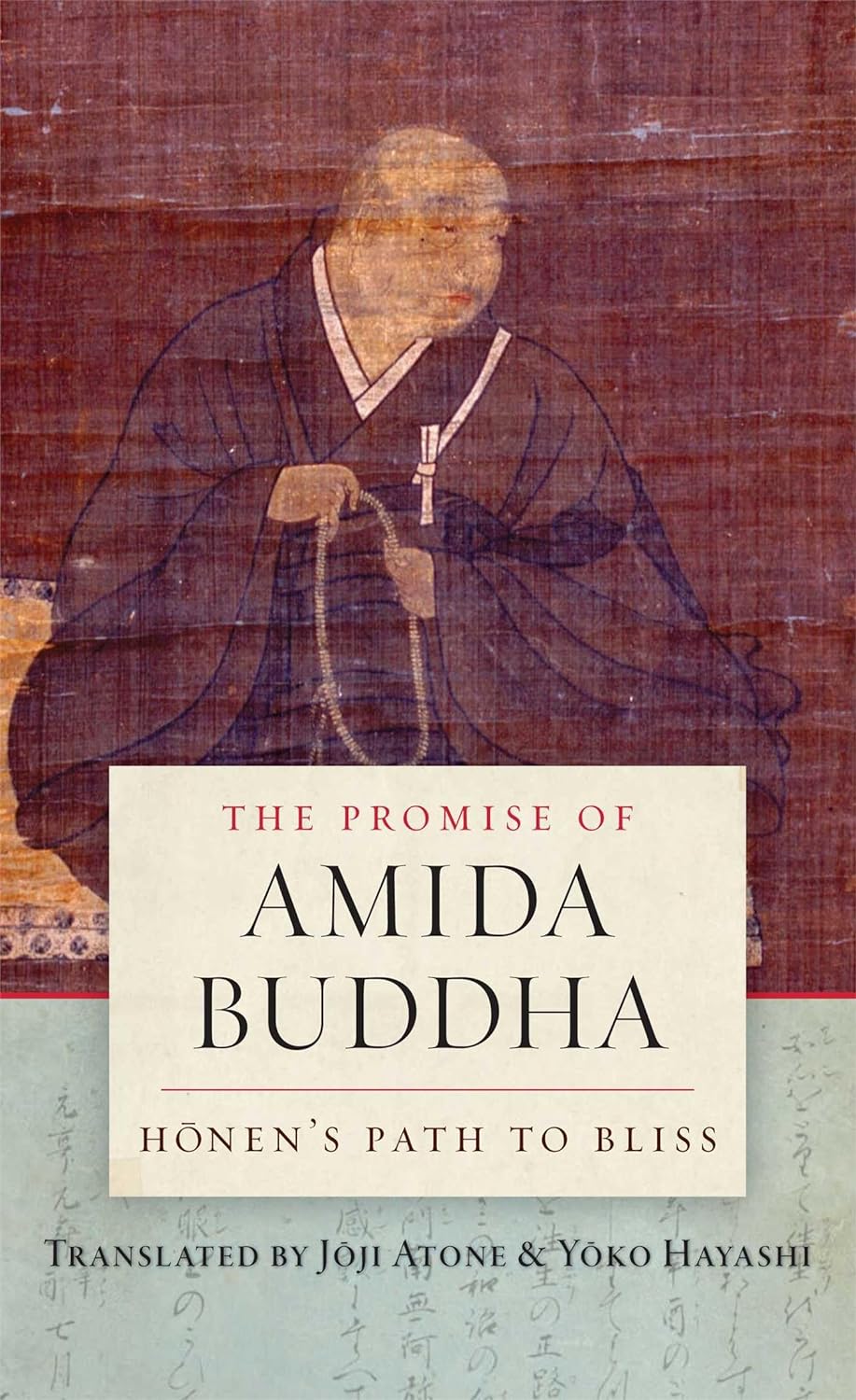
The Pure Land Handbook: A Mahayana Buddhist Approach to Death and Rebirth
Paperback – December 15, 2014
by Master YongHua (Author)
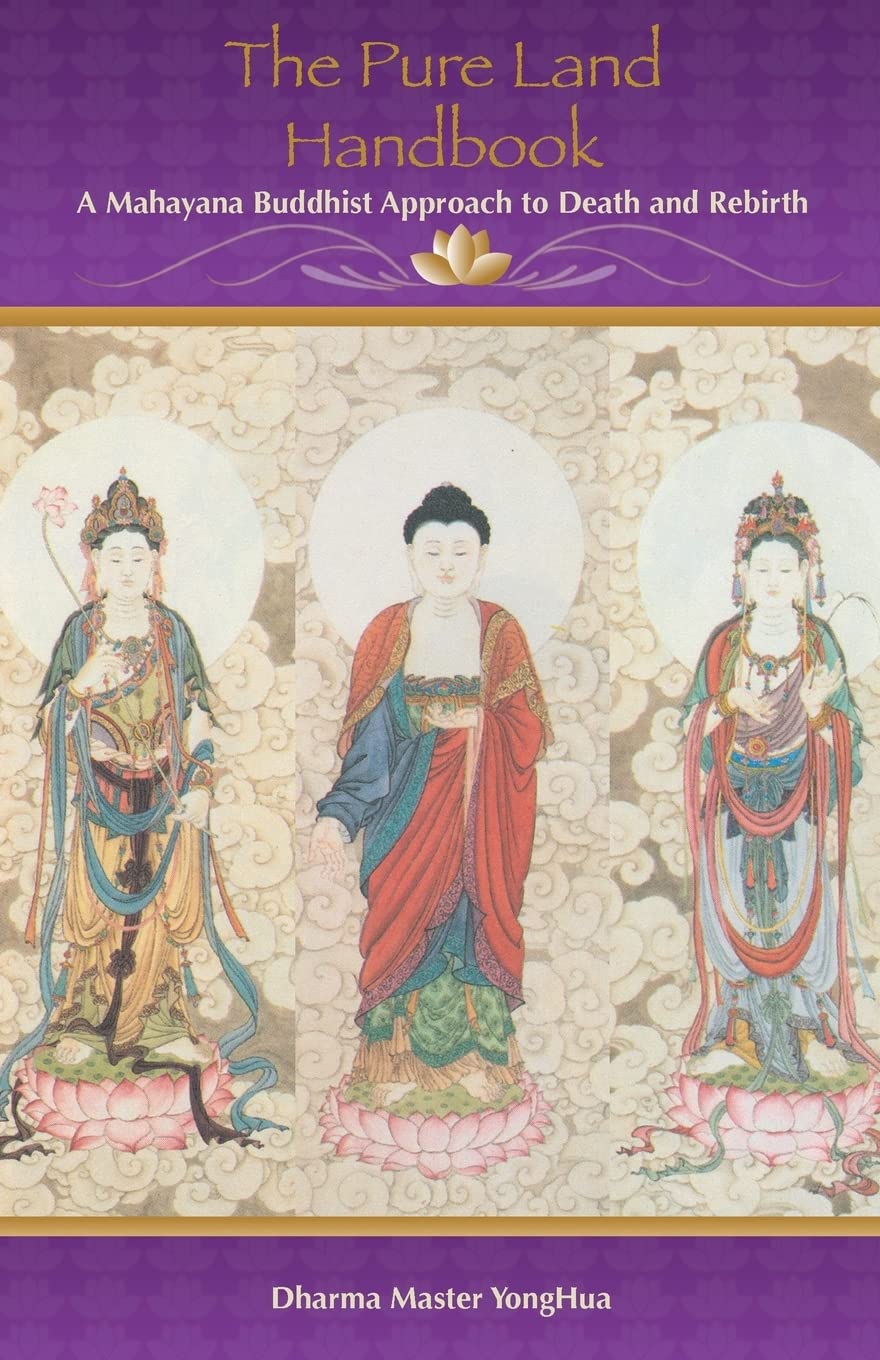
Chinese Pure Land Buddhism
(Pure Land Buddhist Studies) Paperback – September 30, 2020
by Charles B. Jones (Author), Richard K. Payne (Series Editor)

ESOTERIC PURE LAND BUDDHISM
Aaron P. Proffitt
Series: Pure Land Buddhist Studies
Paperback: $35.00
ISBN-13: 9780824893712
Published: January 2024
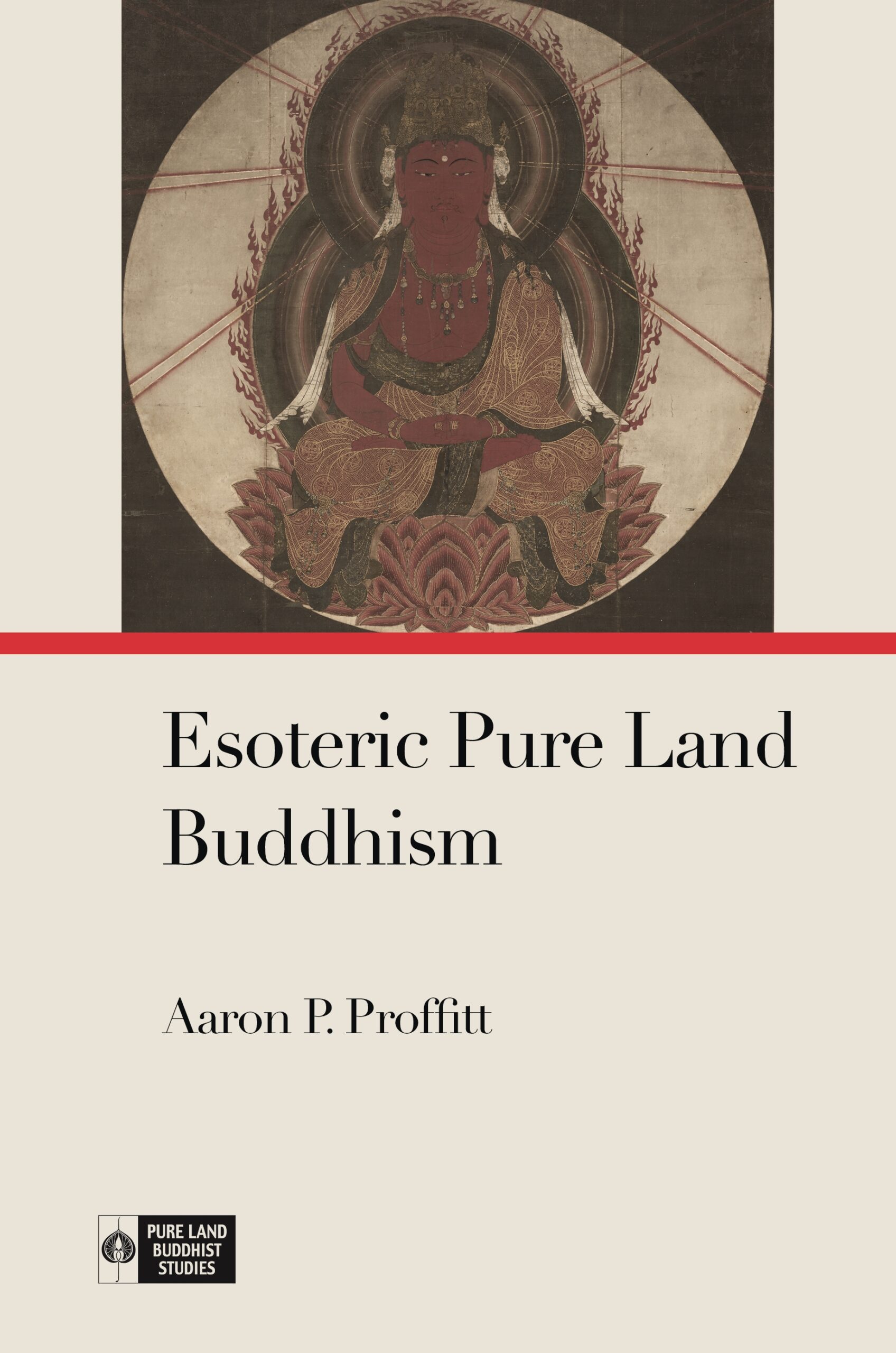
Pure Land
https://www.lionsroar.com/buddhism/pure-land/
What is Pure Land Buddhism? A look at how East Asian Buddhists chant and strive for buddhahood
Published: January 8, 2021 8:28am EST
Pure Land Buddhism: Origins and Beliefs
Author : Peter Vredeveld
https://www.originalbuddhas.com/blog/pure-land-buddhism
The Dawn of Chinese Pure Land Buddhist Doctrine
Ching-ying Hui-yuan’s Commentary on the Visualization Sutra
By Kenneth K. Tanaka
Subjects: Buddhism, Philosophy
Series: SUNY series in Buddhist Studies
Paperback : 9780791402986, 336 pages, August 1990
Hardcover : 9780791402979, 336 pages, August 1990
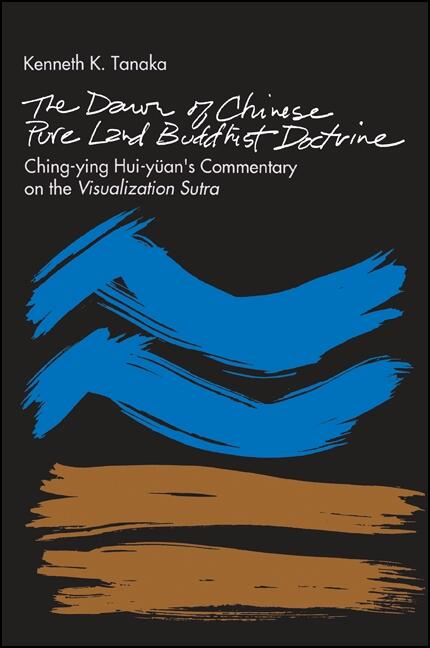
Pure Land in the Making
Vietnamese Buddhism in the US Gulf South
By Allison J. Truitt
PUBLISHED: February 2021
SUBJECT LISTING: Asian American Studies, Anthropology, Asian Studies / Southeast Asia
BIBLIOGRAPHIC INFORMATION: 226 Pages, 6 x 9 in, 16 b&w illus.
ISBN: 9780295748474
Publisher: University of Washington Press
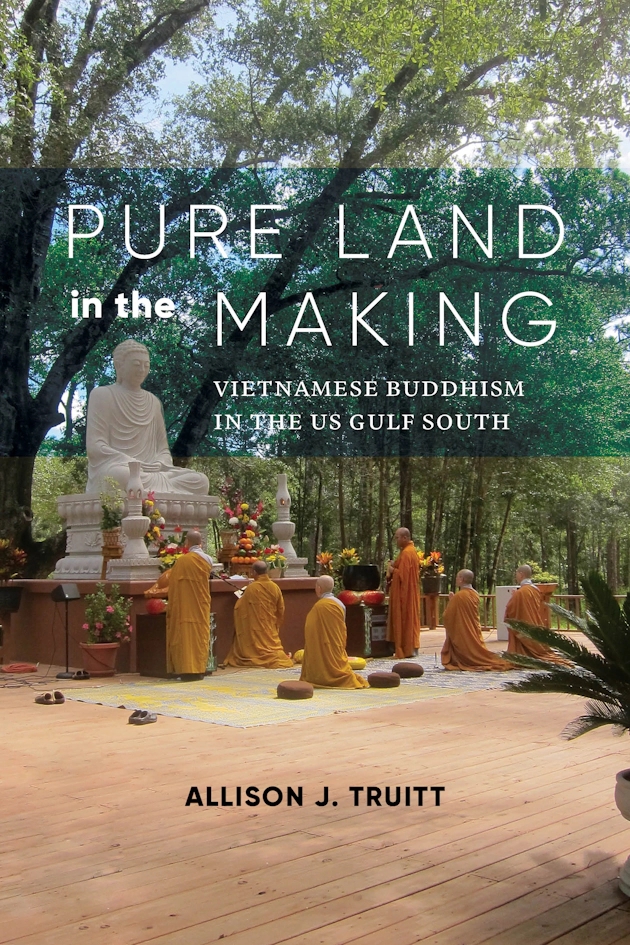
ASPIRING TO ENLIGHTENMENT: PURE LAND BUDDHISM IN SILLA KOREA
Richard D. McBride II
Series: Pure Land Buddhist Studies
Hardback: $68.00
ISBN-13: 9780824882600
Published: August 2020
ADD TO CART
Paperback: $28.00
ISBN-13: 9780824897864
Published: October 2023
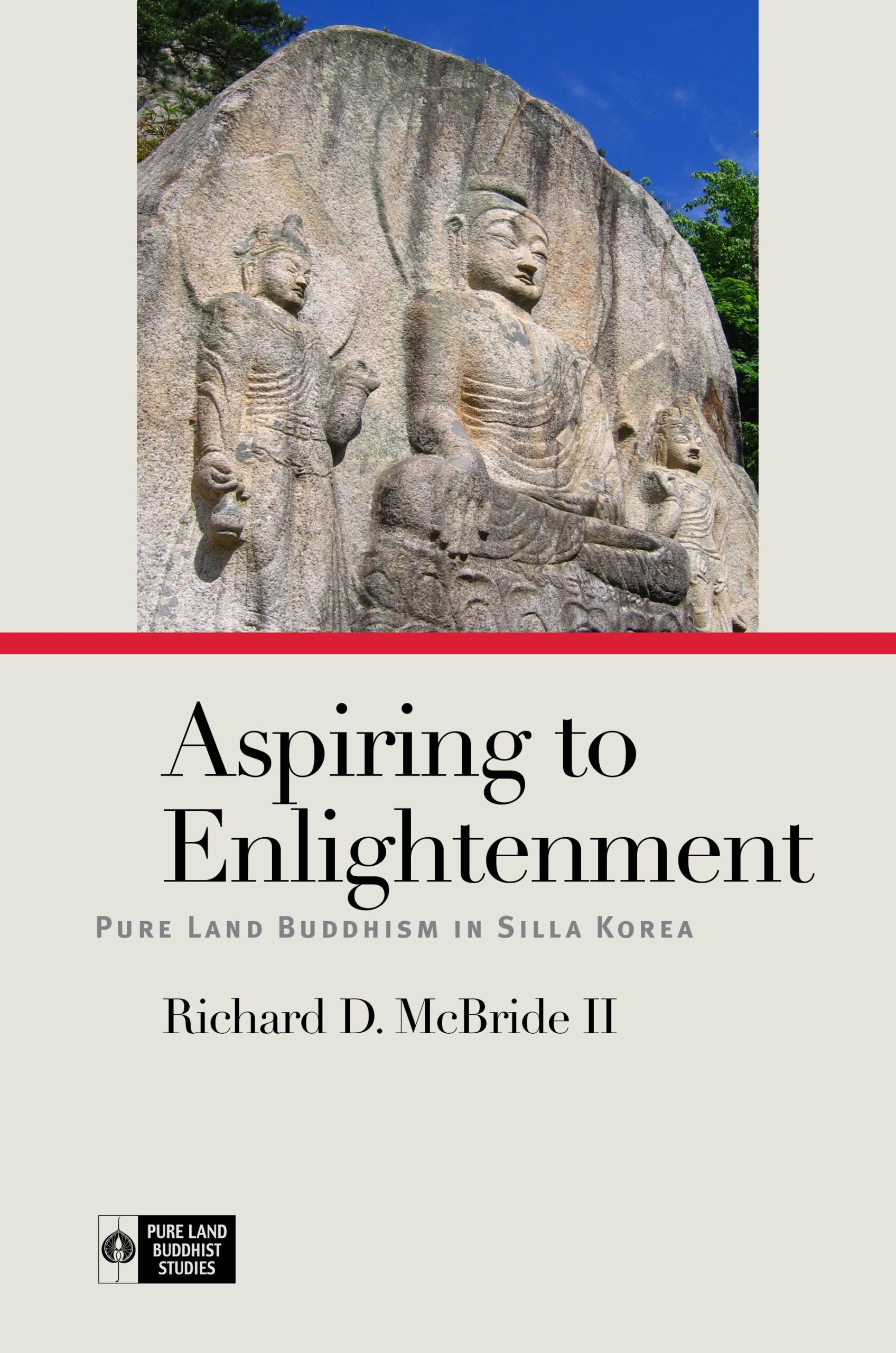
‘Pure Land Buddhism in America’,
Lee, Jesse J.,
in Ann Gleig, and Scott A. Mitchell (eds), The Oxford Handbook of American Buddhism, Oxford Handbooks (2024; online edn, Oxford Academic, 22 May 2024), https://doi.org/10.1093/oxfordhb/9780197539033.013.6, accessed 28 May 2024.
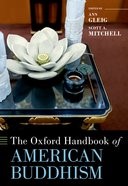
Critical Readings on Pure Land Buddhism in Japan
3 Volume
Editor: Galen Amstutz
Copyright Year: 2020
Hardback
Availability: Published
ISBN: 978-90-04-40137-2
Publication: 04 Jun 2020
https://brill.com/edcollbook/title/55098
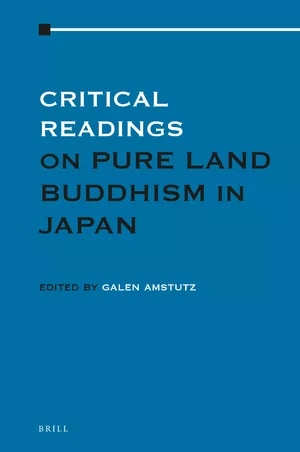
Pure Land Buddhism and Dogen’s Zen Buddhism
Mark Unno
https://pages.uoregon.edu/munno/OregonCourses/REL1010004/R255_Pure_Land,_Dogen_Zen.html
“Reconstructing Pure Land Buddhist Architecture in Ancient East Asia”
Kim, Young-Jae. 2021.
Religions 12, no. 9: 764. https://doi.org/10.3390/rel12090764
https://www.mdpi.com/2077-1444/12/9/764
Pure Land Buddhism
Origins and Practices
https://www.learnreligions.com/pure-land-buddhism-450043
The Growth of Pure Land Buddhism in the Heian Period
In: Critical Readings on Pure Land Buddhism in Japan
Author: Robert F. Rhodes
Type: Chapter
Pages: 127–158
DOI: https://doi.org/10.1163/9789004401501_007
San’en-zan Kodo in Zojoji
Hiraizumi – Temples, Gardens and Archaeological Sites Representing the Buddhist Pure Land
https://whc.unesco.org/en/list/1277/
Hiraizumi – Temples, Gardens and Archaeological Sites Representing the Buddhist Pure Land comprises five sites, including the sacred Mount Kinkeisan. It features vestiges of government offices dating from the 11th and 12th centuries when Hiraizumi was the administrative centre of the northern realm of Japan and rivalled Kyoto. The realm was based on the cosmology of Pure Land Buddhism, which spread to Japan in the 8th century. It represented the pure land of Buddha that people aspire to after death, as well as peace of mind in this life. In combination with indigenous Japanese nature worship and Shintoism, Pure Land Buddhism developed a concept of planning and garden design that was unique to Japan.
The Main Schools of Buddhism
https://www.japan-experience.com/all-about-japan/temples-shrines
In Japan, a total of thirteen schools of Buddhism coexist and have their own temples. Here are the main ones:
- Tendai, a school created in 805 by the monk Saicho and which stands out for its rigorous ascetic practice.
- Shingon, or “True Word”, a school of esoteric Buddhism which emphasizes the recitation of mantras, formulations made up of repeated syllables for meditative purposes.
- Jodo, the Pure Land School, and Jodo Shinshu, a new school of Pure Land, which are the two most popular schools in Japan. They encourage the practitioner to chant Sutras, which are Buddhist writings.
- Soto and Rinzai, which are the two main schools of Zen Buddhism and insist respectively on meditation (zazen) and on koan, which are enigmas that the practitioner must solve to reach enlightenment.
JAPANESE BUDDHIST TEMPLES
https://factsanddetails.com/japan/cat16/sub182/entry-7638.html
Buddhist Temples in Japan: Joruri-ji
Hardcover – January 1, 1960
by Yoshio Watanabe (Author), Suekichi Aono (Contributor), Toshio Fukuyama (Contributor)

Looking for the Pure Land: A Visit to Xuanzhong Monastery
By Guoying Stacy Zhang
September 22, 2017
According to the major sutras of Pure Land Buddhism, the Larger Sukhavativyuha and the Smaller Sukhavativyuha, Amitabha Buddha’s Pure Land (Skt. Sukhavati) lies beyond 10 billion Buddha-lands west of our World of Endurance. Having been fully developed from the mid-6th to the early 9th centuries, the belief in rebirth in such a place and the recitation of Amitabha’s name to achieve this goal became central to Pure Land Buddhism, serving as an expedient for the meditative path to enlightenment or even as a method of equal importance since the Ming dynasty (1368–1644). To better understand the nature of the Pure Land and how it is related to the world in which we sentient beings live, I visited one of the birthplaces of Pure Land Buddhism—Xuanzhong Monastery (玄中寺) in Jiaocheng County, Shanxi Province, China.
Since its establishment in 472, Xuanzhong Monastery has stood on the same site in the Shibi Mountains, remote and secluded. Three patriarchs of the Pure Land school, Tan Luan (曇鸞, 476–542), Dao Chuo (道綽, 562–645), and Shan Dao (善導, 613–81), resided and spread the teachings there. For this reason, Xuanzhong Monastery received continuous imperial patronage during the Tang dynasty (618–907). When Kublai Khan ruled China, he also granted the monastery imperial protection. Khan’s edict, inscribed in stone in both Chinese and the ‘Phags-pa script,* has been well preserved in the monastery’s stele collection. Today, Xuanzhong Monastery is lauded as an ancestral court by Pure Land Buddhists in China, as well as by followers of Jodo Shu and Jodo Shinshu—two Pure Land sects in Japan.
Important Cultural Property
The Pure Land of Amida (Skt. Amitābha)
https://www.narahaku.go.jp/english/collection/650-0.html
There are three types of Amida’s Pure Land paintings in Japan: Taima Mandara, Seikai Mandara, and Chikō Mandara. The Taima Mandara is based on the description of the Kanmuryōju-kyō (Amitāyur-buddha-dhyāna sūtra) and illustrates the story of Ajase the saint, thirteen virtues, and nine styles of going to the Pure Land. In the Seikai Mandara, the painting is surrounded by sixteen verses. The Amida’s (Amitābha’s) Pure Land introduced in this article belongs to neither the Taima nor Seikai types of mandaras. The concept in this picture is similar to that of the Chikō Mandara, which is based on the description in the Muryōju-kyō (Sukhāvatī-vyuha sūtra). Priest Chikō in Gangō-ji temple established the Chikō mandara style during the late Nara period. Not only the concept but also the composition of this picture is similar to that of the Chikō Mandara; the scene is divided horizontally into three or four layers. Beginning with the top layer, sky, palaces, Buddhist deities, sacred trees, the sacred pond, and a dance performance were painted. Bright red and whitish-green are the major colors in the painting, and shu-vermilion and tan-red are used for the gradation in the shading of the costume. This picture is notable for its Japanese style.
Masterpieces of Nara National Museum. Nara National Museum, 1993, p.42, no.27.
Byodoin Temple
Temple with a beautiful Pure Land Garden
https://www.japan-guide.com/e/e3923.html
http://www.buddhanet.net/pdf_file/pureland.pdf
http://ftp.budaedu.org/ebooks/pdf/EN101.pdf
